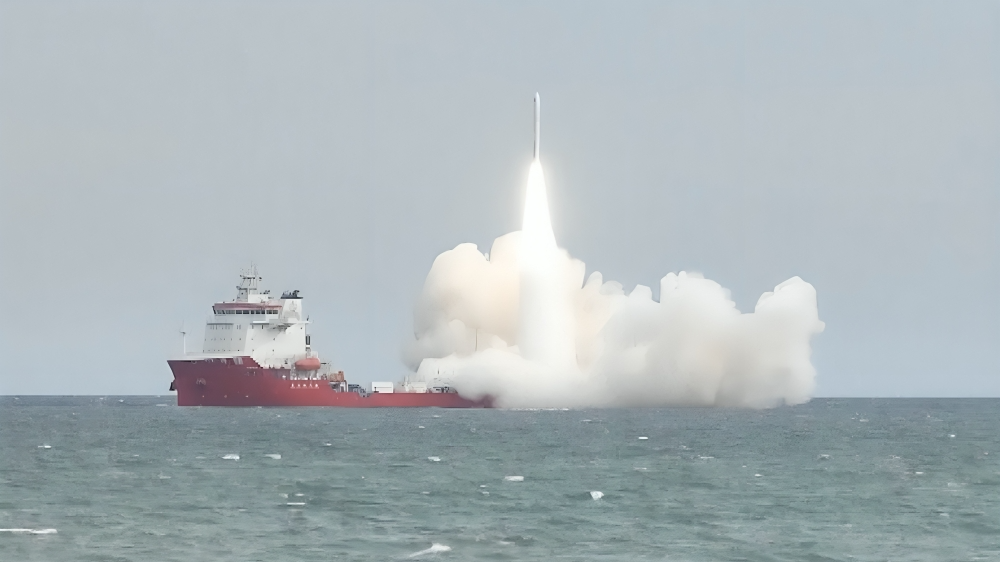A Chinese commercial launch company sent four satellites into orbit on Wednesday (May 29) with the second sea launch of the Ceres-1 solid rocket.
The Ceres-1 lifted off Wednesday at 4:12 a.m. EDT (0812 GMT; 4:12 p.m. Beijing time) from a sea platform off the coast of China’s eastern province of Shandong.
Aboard were the Tianqi 25-28 satellites, part of a planned constellation of Internet of Things (Iot) data connectivity satellites for Beijing-based company Guodian Gaoke. The satellites were sent into a low Earth orbit with an altitude of 528 miles (850 kilometers), Galactic Energy said in a statement.
Watch Chinese company launch 4 satellites to orbit from ship at sea
The launch was the 12th to date for the four-stage Ceres-1 and its second from a sea platform. Galactic Energy gave the mission the codename “Beautiful World,” with sponsorship from social media platform Sina Weibo. China built sea launch capabilities at Haiyang in Shandong to provide another, flexible option for space launches.
Galactic Energy is one of a number of commercial launch companies in China. It is planning four further Ceres-1 sea launches this year, according to Chinese media. It will also conduct land-based launches of Ceres-1. The firm aims to launch its first liquid-propellant rocket, called Pallas-1, later this year as well. Galactic Energy plans to make the Pallas-1’s first stage reusable.
Wednesday’s launch was China’s 25th orbital mission of 2024. China’s main space contractor said early this year that the country is planning around 100 launches across 2024, including about 30 commercial missions.
What is Ceres-1?
Ceres-1 is a four-stage rocket manufactured and operated by Galactic Energy, the first three stages use solid-propellant rocket motors and the final stage uses a hydrazine propulsion system. It is about 20 m (62 ft) tall and 1.4 m (4 ft 7 in) in diameter. It can deliver 400 kg (880 lb) to low Earth orbit or 300 kg (660 lb) to 500 km Sun-synchronous orbit.
The first launch of a Ceres-1 took place at 7 November 2020, successfully placing the Tianqi 11 (also transcribed Tiange, also known as TQ 11, and Scorpio 1, COSPAR 2020-080A) satellite in orbit.
The satellite’s mass was about 50 kg (110 lb) and its purpose was to function as an experimental satellite offering Internet of things (IoT) communications.
On 5 September 2023, the sea-launched version of the launch vehicle, designated Ceres-1S, made its debut successfully sending to orbit four Tianqi satellites. The launch took place from the DeFu 15002 converted barge (previously used also for launching the Long March 11 launch vehicle) off the coast of Haiyang.

